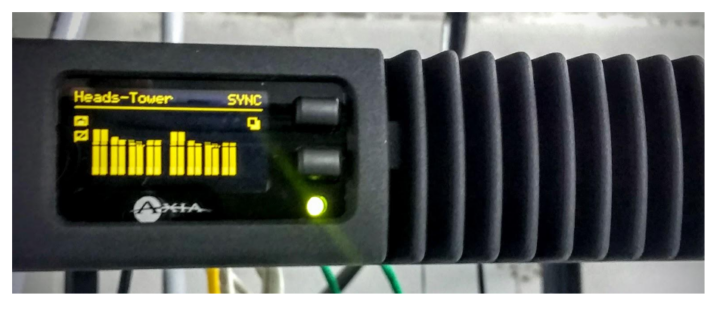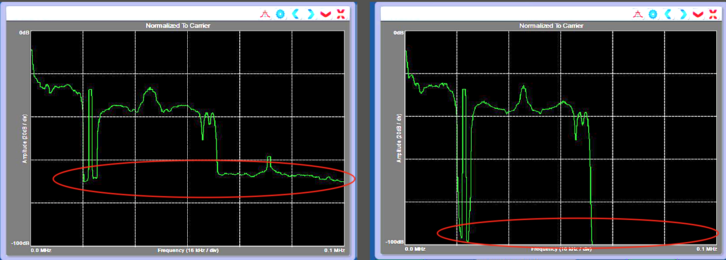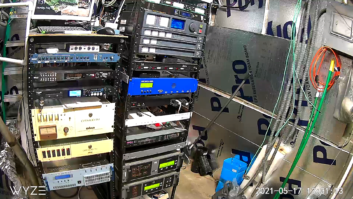The author is senior solutions consultant for Telos Alliance. This article appeared in the ebook “STLs in the 21st Century.”
The vast majority of roughly 22,000 radio stations in the United States (including LPFMs and translators) use some form of audio link from their studio or other origination point to the transmitter site. That’s a lot of studio-transmitter links!

Despite old telco services disappearing and the 950 MHz band being congested in some urban areas, engineers actually have more STL choices than ever before. The key to new STL options is Internet Protocol. And the best news about IP is that it can be transported over several different media and services. Plus, many audio codecs support parallel IP paths for increased reliability.
IP packets are commonly used by broadcasters to carry these signal types for STL purposes:
- Discrete (L/R) audio using IP audio codecs with appropriate IP connectivity
- Linear, discrete (L/R) audio using AoIP (Livewire+, AES67, etc.) with appropriate IP connectivity
- FM Multiplex (MPX) using µMPX bit-rate-reduced multiplex technology for FM
- FM Multiplex (MPX) using linear multiplex technology for FM
- HD Radio from Importer/Exporter to the HD FM exciter using E2X over IP
That’s quite a list of options we have now. As our society’s reliance on IP connectivity grows, so also our options to acquire and use it on a reliable and professional level.
IP-Based STL systems
STL systems based on Internet Protocol technology can be generally divided into two categories, linear and “coded.”
Another disambiguation of IP-based STLs could be “wired” and “wireless.” However, we can also use wired and wireless IP transport methods at the same time, or with one backing up the other.
A third differentiation among IP STL schemes is those delivering discrete Left and Right stereo channels versus those delivering the entire FM multiplex (MPX) signal, at least up to and including the 57 kHz RDS signal.
Linear IP STL systems will transport digital audio perfectly with the same 1s and 0s that go into such an STL being delivered to the far end. Twenty-four-bit, 48 kHz-sampled linear audio typically requires about 2.5 Mbps to transport. While this audio delivery is basically perfect, it typically depends on having zero packet loss over the IP path.
Coded audio systems will use a coding algorithm to reduce the bitrate required for transport. The audio codecs in such STL systems are typically configurable for a wide range of bitrates, and perhaps even a selection of coding algorithms. Bitrates typically range from about 128 kbps up to 756 kbps, depending on the chosen codec. Modern coding algorithms offer some “error concealment” as well in case of occasional packet loss.
Linear IP STL systems are absolutely transparent to the audio. Every sample of audio data from the studio arrives exactly the same at the transmitter site. The IP transport path must provide excellent packet delivery performance in a linear IP audio system. Indeed, a common approach to implementation is to simply extend the audio over IP (AoIP) network at the studio out to the transmitter site.
One example of such a system is at Delta Radio LLC, in Greenville, Miss. The studio and rack room were fully Livewire AoIP already. A robust 5.8 GHz IP-radio link was established to the transmitter site, 13 miles away. See Fig. 1.

The only audio equipment required at the transmitter site, apart from the IP radio, is a Telos Alliance xNode. Four linear stereo channels are received there via the xNode. For remote monitoring, there are four linear stereo return channels over the same IP connection. All this audio is 20 kHz in bandwidth, using 48 kHz digital sampling and 24 bits per sample. The aggregate data rate across the IP radio link is about 10 Mbps in each direction.
Other examples of IP-radio STL systems transporting AoIP are now commonplace, from stations in rural Australia and small Pacific islands to the largest radio markets in the U.S.
IP radios may be licensed or unlicensed, depending on the RF band selected for operation. Unlicensed IP radio pairs are likely to work well in rural or uncongested areas, but careful consideration and backup planning is critical for unlicensed operation in built-up urban locales.
[Sign Up for Radio World’s SmartBrief Newsletter]
Coded-audio IP STL systems offer several advantages in terms of bandwidth requirements and recovery from packet loss. While a linear IP STL, as discussed, needs a near-perfect IP transport path to work properly, a codec-based IP STL is more forgiving. Codecs generally offer more packet buffering, error concealment and error correction compared to a linear system. While audio codecs themselves will cost more than, say, a simple “node” AoIP endpoint, they offer more flexibility in their IP connection’s requirements.
For example, using audio codecs at each end, one may install an IP radio link pretty much “out of the box” and have a working STL. One may also use the public internet for either the main or backup link between codecs.
There’s yet another IP-based STL method now in popular use. It’s an FM MPX transport codec over IP.
This is similar in connection to the audio chain as an MPX RF STL; the FM audio processor is placed at the studio, and the full MPX signal is carried to the transmitter site where it is routed to the FM exciter directly. These MPX-over-IP systems also appear in both linear and coded varieties. Linear MPX STLs require anywhere from 3 to 7 Mbps to faithfully sample and transport an FM processor’s MPX output.
More recently, an even more useful method has become popular for coding the FM MPX signal to transport it at a much lower bitrate — about 15 percent of the linear method. The trade name is MicroMPX and it’s available in both standalone and built-in form factors from several FM processor manufacturers.
This proprietary method does not use psychoacoustic coding. Rather, it’s a novel application of mathematical data reduction that is well-suited for the FM MPX signal. “Well-suited” because artifacts of the MicroMPX algorithm tend to fall in time and frequency where they don’t affect the perceived audio. And, unlike psychoacoustic codecs, precise peak control is maintained through a MicroMPX STL system. The minimum bitrate for MicroMPX systems is 320 kbps, with a maximum of 576 kbps. Commercial MicroMPX products may offer dual IP path redundancy as well as Forward Error Correction (FEC) to rebuild occasional lost packets. See Fig. 2.

The IP transport(s) for MicroMPX can be public internet, IP radios, wireless ISP, etc. or any combination of those.
A welcome benefit of the MicroMPX technology is the greatly reduced noise floor in the FM MPX spectrum. The spectrograph on the left of Fig. 3 shows a properly operating analog FM STL system with the FM MPX signal as delivered to the transmitter. The noise floor across the spectrum is about –70 dB. This is considered normal for analog MPX STL systems, yet this –70 dB noise will be faithfully transmitted by the FM transmitter continuously.

The spectrograph on the right of the image shows the same station’s audio delivered by the MicroMPX method, which includes effective digital filtering of the FM baseband spectrum. The filtered noise floor is at or near –100 dB resulting in a much cleaner transmitted FM signal.
IP-based STL systems easily offer the most flexibility in terms of connection options. If a private, high-quality IP link, using enterprise-grade IP radios, for example, can be installed, then two-way linear audio is the best option for perfect audio transport. That same high-quality IP connection can also be used for remote transmitter control, remote backup, disaster recovery options, security video surveillance, remote telephony and so much more. If only public internet or lesser-grade IP radio paths are available, then coded audio at the highest available bitrate makes sense.
In either case, having more than one IP path is truly important for redundancy.
Wrapping it up
Radio broadcasters truly have more options than ever for their STL technology. Traditional 950 MHz RF links work well enough in many situations. Analog systems do exhibit some noise, while digital 950 MHz links may be constrained by filters and less bit depth, or by audio coding artifacts. IP-based solutions afford engineers more options, including the possibility of the most pristine linear audio link they’ve ever experienced.







